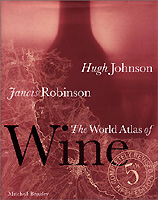More than two decades have passed since The World Atlas of Wine made its first appearance. During that time the book that the French supreme wine authority, the Institute National des Appellations d'Origine (INAO), called "a major landmark in the literature of wine" has been hailed by critics all over the world as "extraordinary" and "irreplaceable." Translated into a dozen languages, it has been bought by more than two million people, and commands an unrivaled position as the definitive work for wine lovers, connoisseurs, and professionals alike.
The fourth edition of this undisputed classic has been completely revised and updated to keep abreast of the changing world of wine. Since the publication of the third edition, wine making and wine appreciation have not stood still. The Old World has risen to the challenge of the New: important legislative changes have taken effect; previously unrecognized wines and wine regions are coming to the fore; wine makers are taking their skills into new regions and new countries and are learning from one another. In every wineproducing country standards of wine making are being raised in response to the unrelenting pressure for quality, not quantity.
Hugh Johnson emphasizes that there is an intimate relationship between geography and wine -- that where the wine comes from determines its quality, style, and taste. This new edition of the Atlas guides the wine lover and professional through the world's quality vineyards to the year 2000. The authoritative choice of maps has been expanded in its coverage and new information added, maintaining the crucial link between wine and place. The better the wine, the more precisely the Atlas locates its origin, down to a single field.
Besides revealing where a vineyard is located, maps can explain why it is there: what is singular about the site and its size; its soil, slope, sunshine, rainfall; and how it relates to its neighboring vineyards. They reveal the fundamental differences in terroir -- the myriad details of a landscape which conspire to make the difference between a grand cru and a vin de table.
This new edition of the Atlas further expands its coverage and visual appeal. Every one of its 180 maps has been revised, extended where necessary, and brought completely up-to-date. Of these, 36 are totally new, mapping areas that have recently risen -- or risen again -- to excellence, or have changed so greatly that they demand new cartographic treatment. The entire introductory section on the background to wine and its enjoyment has been redesigned and newly illustrated. New artwork, color photographs, fact boxes, and tables enhance the text, much of it rewritten to reflect the latest changes.
Despite the considerable efforts of competitors around the world, no other wine atlas can match The World Atlas of Wine or claim its cartographic excellence. The translation of this atlas into a dozen languages bears witness to its remarkable success. In his foreword to the third edition, the president of the Office International de la Vigne et le Vin predicted a choice place for the Atlas in every wine expert's or wine lover's library. This fourth edition is set to maintain and enhance its status through a third decade.
About the Authors
Hugh Johnson began acquiring his wine knowledge as a member of the Wine and Food Society at Cambridge. When he came down from King's College in 1961 he became feature writer for Vogue and House & Garden, writing, among other things, wine columns for both magazines. In 1963 he became general secretary of the Wine and Food Society and succeeded the legendary gastronome Andre Simon as editor of Wine and Food. At the same time he became wine correspondent of The Sunday Times and started work on his first book Wine (1966), through which he established himself at the age of 27 as one of the subject's foremost writers. His rare talent for making the most complex subjects readable has led to a remarkable sequence of books. Hugh Johnson has been President of the Sunday Times Wine Club since its foundation in 1973. He is also retained as a consultant to a string of diverse organisations including British Airways and Jardines Wines and Spirits in Tokyo. Hugh has also lectured and featured on television and radio many times around the world. He has developed a range of high-quality wine accessories including glasses, decanters, coolers and corkscrews which form the Hugh Johnson collection, and sells in, among other countries, the US, Japan, Hong Kong, and Italy.
Jancis Robinson is a wine writer and broadcaster with an international reputation. The first journalist to have passed the notoriously stiff Master of Wine exams, she was awarded an Honorary Doctorate by The Open University in 1997and was Decanter Magazine's 1999 (Wo)man of the Year. She was also voted first ever Television Personality of the Year in the 1999 Glenfiddich Awards for food and drink media. In the same year her fellow wine writers voted her Most Influential Wine Writer by an overwhelming margin. In 1996 she was named Wine Woman of the Year in the US and in 2001 will be awarded the Florida Winefest's second ever Andr' Simon award for wine writing, won by Robert Parker last year.
Hugh and Jancis remember first meeting at a tasting of Ontario wines in Canada House, London in 1976. Hugh and Jancis would be at the same wine tastings all over the world from then on. This then led to Hugh inviting Jancis for lunch at the Spanish Restaurant in Swallow Street London. Soon after they became firm friends and their paths have crossed on many occasions from tastings to book launches, and from press conferences to trips abroad.






